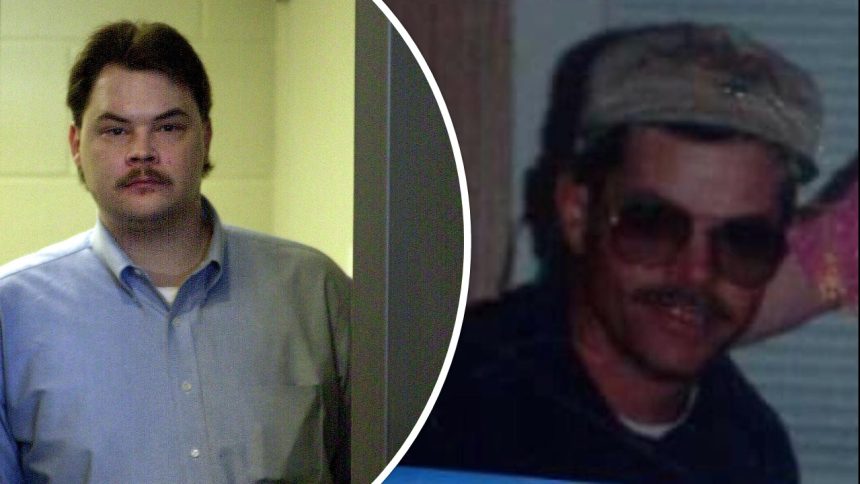In a case that haunted the city of Austin for decades, a terrifying mystery has finally been solved. Police have announced a major breakthrough in the 1991 Yogurt Shop Murders, identifying the man they believe is responsible for the brutal killings of four teenage girls. The suspect, Robert Eugene Brashers, was a serial killer who died by suicide in 1999, but it took advances in DNA technology to finally link him to one of Austin’s most infamous crimes.
The announcement on September 26, 2025, brings a long-awaited measure of closure to a community forever scarred by the tragedy. For nearly 34 years, the murders of Amy Ayers, Eliza Thomas, and sisters Jennifer and Sarah Harbison remained a painful open wound, characterized by false starts and tragic wrongful accusations. The breakthrough came from a tiny, degraded DNA sample collected from the crime scene all those years ago, a piece of evidence that finally yielded its secrets through cutting-edge genetic genealogy testing.
You Might Like: James Comey Indictment Charges
A Case Marred by Tragedy and False Leads
The horror unfolded on the night of December 6, 1991, at the “I Can’t Believe It’s Yogurt” shop on Austin’s West Anderson Lane. Firefighters responding to a blaze discovered a nightmarish scene inside: the bodies of four girls—13-year-old Amy Ayers, 17-year-old Eliza Thomas, and sisters Jennifer, 17, and Sarah Harbison, 15. They had been bound, gagged, shot in the head, and left in the shop as it was set on fire. The sheer brutality of the crime stunned the city and launched an investigation that would span generations.
After 33 years, Austin’s infamous 1991 Yogurt Shop Murders have been solved. Investigators say DNA ties serial killer Robert Eugene Brashers—who died by suicide in 1999—to the brutal killings of four teenage girls.@cbsaustin
PHOTOS: @CBSNews pic.twitter.com/nTsgyQmUHD
— Abigail Velez (@velez_tx) September 26, 2025
The path to justice was anything but straightforward. The fire severely compromised forensic evidence, and for years, investigators waded through thousands of leads. The case took a devastating wrong turn in 1999 when four young men—Robert Springsteen, Michael Scott, Maurice Pierce, and Forrest Welborn—were arrested and charged. Springsteen and Scott gave confessions, but both later recanted, claiming they were coerced by police. Despite the lack of physical evidence, Springsteen was convicted and sent to death row, while Scott received a life sentence. Their convictions were eventually overturned, and in a pivotal moment in 2009, they were freed after new DNA tests revealed an unknown male profile that excluded all four men.
The Breakthrough: DNA and a Deadly Pattern
The key to breaking the case open was a persistent strand of male DNA, developed from evidence collected from one of the victims. For years, this profile had no match. The turning point came with the advent of advanced DNA testing techniques, including Y-STR testing and genetic genealogy, which allowed investigators to build a viable profile from the small, aged sample. This genetic trail led them directly to Robert Eugene Brashers.
Brashers was no stranger to violent crime. By the time of the yogurt shop murders, he was already a dangerous offender. In 1985, he was convicted of the attempted murder of a woman in Florida. After his release from prison, he embarked on a series of crimes across the South. In 2018, authorities linked him through DNA to the 1990 strangulation of Genevieve Zitricki in South Carolina and the 1998 murders of a mother and daughter, Sherri and Megan Scherer, in Missouri. He was also connected to the 1997 r*pe of a 14-year-old girl in Tennessee. The patterns in these crimes—binding victims and extreme violence—were hauntingly similar to the Austin murders.
Also See: FAFO Meaning: What Does Elon Musk’s “FAFO” Tweet Stand For?
Retired Austin detective John Jones revealed to CBS News that a bullet casing found in a drain at the yogurt shop is believed to be consistent with the gun Robert Eugene Brashers used to kill himself in 1999. Brashers died during a standoff with police at a Missouri motel, where he shot himself after releasing family members he had taken hostage. His identification as the perpetrator confirms the long-held belief that the killer was a stranger to Austin, a transient predator who brought unimaginable violence to the community and then vanished.
Never Forgotten. December 6, 1991.
Law enforcement sources confirmed the 1991 Yogurt Shop Murders have been solved using genetic genealogy technology. The perpetrator has been identified as American serial killer Robert Eugene Brashers, who died by suicide in 1999. pic.twitter.com/RiFXwgmyIx
— Dra.001 (@001Dra) September 27, 2025
The news has sent ripples through the lives of all involved. For the families of the four girls, it offers a painful but definitive answer. For Deborah Brashers, the killer’s daughter, the revelation was a devastating burden to bear. She was just a baby when the murders occurred and only eight when her father died. In an interview, she expressed her sorrow for the victims’ families and a wish that her father could have been punished for his crimes.
While Robert Eugene Brashers will never stand trial in a court of law, the Austin Police Department’s identification of him closes a painful chapter for a city that has waited 34 years for answers. The case is a powerful testament to the persistence of cold case investigators and the evolving power of forensic science to deliver justice, no matter how much time has passed.



